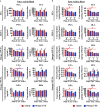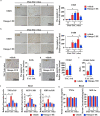Omega-3 fatty acid prevents the development of heart failure by changing fatty acid composition in the heart
- PMID: 32968201
- PMCID: PMC7512019
- DOI: 10.1038/s41598-020-72686-0
Omega-3 fatty acid prevents the development of heart failure by changing fatty acid composition in the heart
Abstract
Some clinical trials showed that omega-3 fatty acid (FA) reduced cardiovascular events, but it remains unknown whether omega-3 FA supplementation changes the composition of FAs and their metabolites in the heart and how the changes, if any, exert beneficial effects on cardiac structure and function. To clarify these issues, we supplied omega-3 FA to mice exposed to pressure overload, and examined cardiac structure and function by echocardiography and a proportion of FAs and their metabolites by gas chromatography and liquid chromatography-tandem mass spectrometry, respectively. Pressure overload induced cardiac hypertrophy and dysfunction, and reduced concentration of all FAs' components and increased free form arachidonic acid and its metabolites, precursors of pro-inflammatory mediators in the heart. Omega-3 FA supplementation increased both total and free form of eicosapentaenoic acid, a precursor of pro-resolution mediators and reduced free form arachidonic acid in the heart. Omega-3 FA supplementation suppressed expressions of pro-inflammatory cytokines and the infiltration of inflammatory cells into the heart and ameliorated cardiac dysfunction and fibrosis. These results suggest that omega-3 FA-induced changes of FAs composition in the heart have beneficial effects on cardiac function via regulating inflammation.
Conflict of interest statement
The authors declare no competing interests.
Figures





References
Publication types
MeSH terms
Substances
LinkOut - more resources
Full Text Sources
Medical
Research Materials
Miscellaneous

